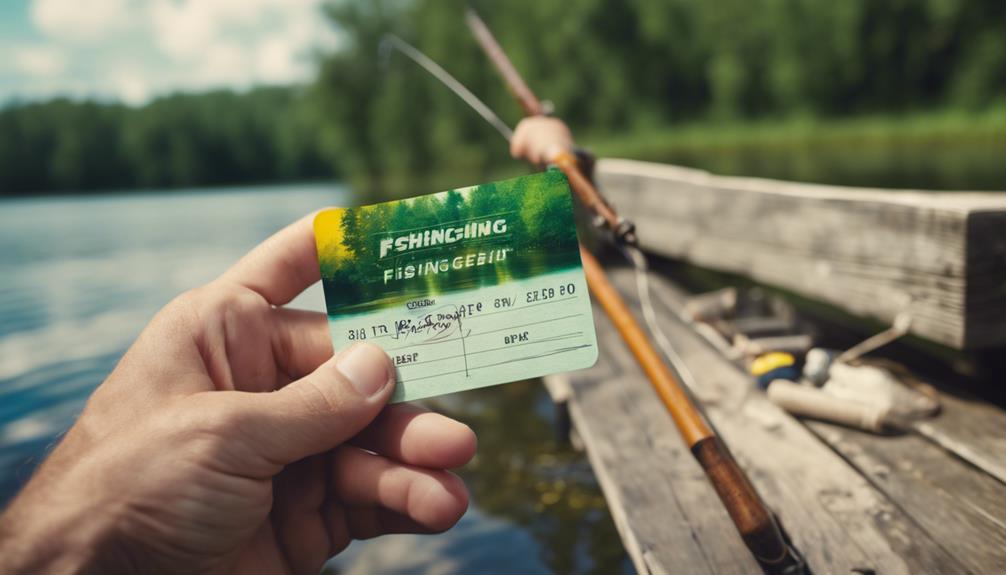Fishing in California is a cherished pastime for many, offering opportunities to explore the state’s diverse waterways while enjoying the great outdoors. However, before casting your line, you need to be aware of the regulations that govern fishing in the Golden State, including obtaining a fishing license. In this article, we will explore how to get a fishing license in California, covering everything from the application process to the types of licenses available.
Understanding the Importance of a Fishing License
Before diving into the specifics of how to get a fishing license in California, it’s essential to understand why having one is important. A fishing license is a legal requirement that helps manage and conserve fish populations and their habitats. In California, the Department of Fish and Wildlife (DFW) regulates fishing activities to ensure sustainable practices, protecting both the environment and the anglers. By purchasing a fishing license, you contribute to conservation efforts, funding for habitat restoration, and educational programs aimed at promoting responsible fishing.
Eligibility Requirements for a Fishing License in California
To get a fishing license in California, you must first meet certain eligibility criteria. Generally, anyone aged 16 and older is required to have a fishing license. Exceptions include those who are fishing on free fishing days, typically held twice a year, when no fishing license is needed. Additionally, specific licenses are available for seniors, veterans, and disabled individuals, often at reduced rates. It’s also crucial to understand that certain regulations apply depending on the type of fish you intend to catch, whether it’s freshwater or saltwater, so familiarize yourself with the relevant guidelines.
Types of Fishing Licenses Available in California
California offers several types of fishing licenses to cater to different needs and preferences. The most common options include:
1. Annual Fishing License: This standard license is valid for a full year from the date of purchase and allows you to fish in both freshwater and saltwater.
2. Short-Term Fishing License: Ideal for visitors or those who fish infrequently, this license is available for 1 day, 2 days, or 10 days.
3. Lifetime Fishing License: For avid anglers, a lifetime license offers long-term access without the need for annual renewals.
4. Special Licenses: These include licenses for seniors, disabled individuals, and veterans, often at a discounted rate.
When considering how to get a fishing license in California, it’s important to choose the option that best suits your fishing habits and lifestyle.
Where to Obtain a Fishing License in California
When you’re ready to get a fishing license in California, you have several options for obtaining one. The most convenient way is to purchase your license online through the California Department of Fish and Wildlife’s website. Here, you can fill out the application form, pay the required fees, and receive your license instantly. Alternatively, you can visit authorized retail locations, such as sporting goods stores, bait shops, and certain government offices. If you prefer a more personal touch, you can also obtain your license by visiting a DFW office.
The Cost of a Fishing License in California
The cost of a fishing license in California varies based on factors such as the type of license, your age, and residency status. As of 2023, an annual fishing license for California residents typically costs around $52.66, while non-residents can expect to pay approximately $142.00. Short-term licenses are more affordable, with prices ranging from $17.02 for a 1-day license to $47.01 for a 10-day license. Remember that additional fees may apply for certain endorsements, such as ocean enhancement or a second-rod validation. It’s essential to check the DFW website for the most current pricing and any potential discounts available.
Fishing Regulations and Limitations in California
Once you have acquired your fishing license, it’s vital to familiarize yourself with California’s fishing regulations and limitations. These rules include specific fishing seasons, size and bag limits, and designated fishing areas. For instance, certain lakes and rivers may have restrictions on the type of bait you can use or specific catch-and-release guidelines. Ignoring these regulations can lead to steep fines and penalties, so staying informed is crucial. The DFW provides a wealth of resources, including the California Sport Fishing Regulations booklet, which outlines all the necessary rules and guidelines.
Renewing Your Fishing License in California
If you decide to fish regularly, keeping your fishing license current is essential. In California, fishing licenses expire annually, typically on December 31st. To renew your fishing license, you can easily do so online through the DFW’s website or at authorized retail locations. Renewal fees are generally similar to the initial purchase price, so it’s a good idea to budget for this expense yearly. Additionally, if you’ve opted for a short-term license in the past and plan to fish more frequently, consider upgrading to an annual or lifetime license for added convenience and savings.
Final Thoughts on Getting a Fishing License in California
In conclusion, obtaining a fishing license in California is a straightforward process that allows you to enjoy one of the state’s most beloved recreational activities. By following the steps outlined in this guide, you can ensure that you’re compliant with local regulations while also contributing to the conservation of California’s rich aquatic ecosystems. Whether you’re fishing in the stunning Pacific Ocean, serene lakes, or winding rivers, having a valid fishing license is your ticket to adventure. So, gather your gear, embrace the tranquility of nature, and embark on your fishing journey in California today!
By understanding how to get a fishing license in California and adhering to the necessary regulations, you’ll be well on your way to enjoying countless hours of fishing fun while contributing to the preservation of California’s natural resources. Happy fishing!
